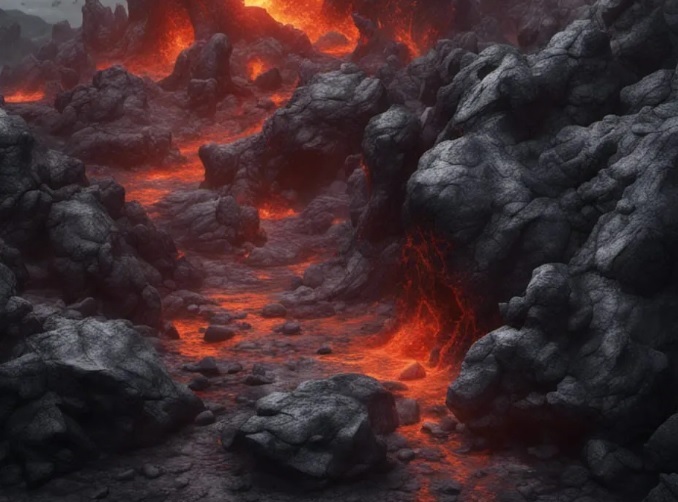Difference between revisions of "Aa"
Tao alexis (talk | contribs) |
Tao alexis (talk | contribs) |
||
| (3 intermediate revisions by the same user not shown) | |||
| Line 1: | Line 1: | ||
| − | [[File:Aa.jpg|right|525px|thumb| | + | [[File:Aa.jpg|right|525px|thumb|]] |
| − | '''Aa''' | + | '''Aa''', pronounced as "ah-ah," characterizes a volcanic terrain with an exceptionally rugged and jagged surface. This distinctive landscape is the result of [[Lava|lava]] cooling and solidifying while still in motion. As the front edge of the lava flow cools, the interior remains viscous. This unhardened lava breaches the surface crust, causing the leading edge of the flow to transform into a mass of fractured and jagged chunks. Fragments of the lava crust then cascade downhill, contributing to the overall uneven and chaotic nature of the terrain. |
| + | __TOC__ | ||
| + | Aa formations can also occur when a lava flow encounters groundwater, causing a rapid conversion of the water into steam, which explosively shatters the lava crust. | ||
| − | + | The remarkably spiky surface of solidified aa renders walking exceedingly challenging and sluggish, restricting [[Humanoid|humanoids]] and most creatures to a [[Movement (stride)|stride]] no greater than one. However, creatures like [[Slime Moulds (sage study)|jellies and oozes]] are unaffected by these treacherous conditions. | |
| − | The | + | == Lava Fields == |
| + | The Hawaiian Islands are home to some of the most prominent aa lava fields. Kilauea and Mauna Loa, two of the world's most active volcanoes, have created extensive lava fields over the years. Similar fields can be found in other volcanic regions worldwide, including Iceland, the Canary Islands, and various parts of the Pacific Ring of Fire. Each region has its own geological and environmental characteristics, creating diverse landscapes. | ||
| Line 13: | Line 16: | ||
[[Pacific Islands]] | [[Pacific Islands]] | ||
| − | [[Category: Geology]][[Category: | + | [[Category: Geology]][[Category: Reviewed]] |
Latest revision as of 00:51, 18 February 2025
Aa, pronounced as "ah-ah," characterizes a volcanic terrain with an exceptionally rugged and jagged surface. This distinctive landscape is the result of lava cooling and solidifying while still in motion. As the front edge of the lava flow cools, the interior remains viscous. This unhardened lava breaches the surface crust, causing the leading edge of the flow to transform into a mass of fractured and jagged chunks. Fragments of the lava crust then cascade downhill, contributing to the overall uneven and chaotic nature of the terrain.
Contents
Aa formations can also occur when a lava flow encounters groundwater, causing a rapid conversion of the water into steam, which explosively shatters the lava crust.
The remarkably spiky surface of solidified aa renders walking exceedingly challenging and sluggish, restricting humanoids and most creatures to a stride no greater than one. However, creatures like jellies and oozes are unaffected by these treacherous conditions.
Lava Fields
The Hawaiian Islands are home to some of the most prominent aa lava fields. Kilauea and Mauna Loa, two of the world's most active volcanoes, have created extensive lava fields over the years. Similar fields can be found in other volcanic regions worldwide, including Iceland, the Canary Islands, and various parts of the Pacific Ring of Fire. Each region has its own geological and environmental characteristics, creating diverse landscapes.
See also,
Coral Reef (range)
Geology (sage study)
Jungle (range)
Pacific Islands
